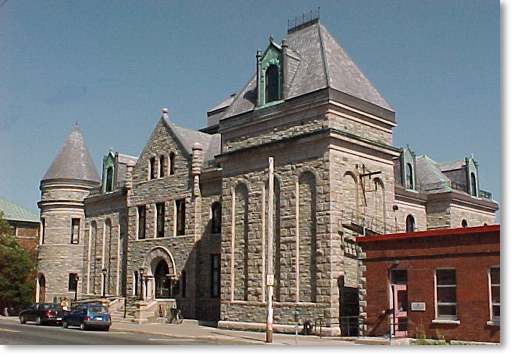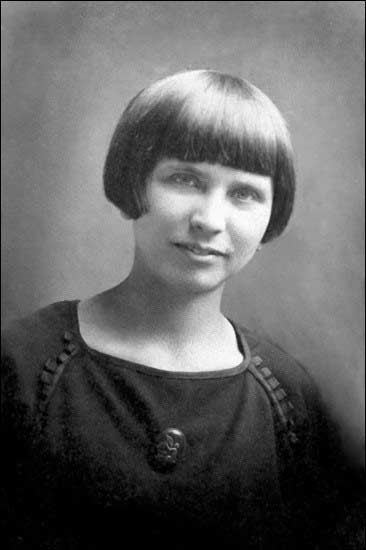Women and the Court House: Louise M. Saunders and Catherine Snow
25. Continue along Duckworth Street to the Court House at #311.
Women have experience on both sides of the legal system in Newfoundland. The courthouse has many stories of their encounters as practising lawyers and as accused.

Louise M. Saunders (1893-1969)
Louise Maude Saunders was born in Greenspond, Newfoundland and graduated from Bishop Spencer College in St. John's. She was admitted to the Bar in 1933, becoming the first female lawyer in Newfoundland. She began her career as a legal secretary in the office of Richard A. Squires (who was Prime Minister of Newfoundland during the 1920s), articled under Squires, and eventually practised in partnership with him. Louise practiced in civil law, probate and administration of estates and property law.
In 1951, Louise became a partner in the firm of Squires, Saunders and Carew. In 1964 she was named Queen's Counsel, the first women in Newfoundland to be awarded the honour.

Besides her legal career, Louise was active in the community as a charter member of the Local Council of Women, which she served as legal advisor until her death in 1969. In 1954, she took first prize for a painting of St. Thomas' Church in the first government sponsored Arts and Letters competition.
Catherine Snow (ca. 1793-1834)
Catherine Snow had the distinction of being the last woman hanged in Newfoundland, out of the 2nd story of the old Court House in 1834.
Catherine was born in Harbour Grace, Newfoundland around 1793. She had lived common law and then married a planter, John Snow, in Port au Grave. They had seven children together despite their unhappy marriage.
When her husband was murdered, in August 1833, she was implicated along with her cousin Tobias Mandeville, with whom she was having an affair, and an indentured servant from Ireland named Arthur Spring. All three were tried together, even though Arthur had renounced his indictment of Catherine. Found guilty, the men were hanged two weeks later.
Catherine's execution was delayed due to her pregnancy with Mandeville's child. The Catholic church, under Bishop Michael Fleming, supported Catherine's innocence throughout, but an appeal was unsuccessful. The climate of religious tension at the time may have been a contributing factor. The Governor of the day, Thomas Cochrane, delayed her execution until after the birth of her child, Richard.
In July 1834 she was hanged. Despite her execution, she was buried in the Catholic cemetery that night. Many believed she was not proven guilty. Bishop Fleming, a native of Carrick on Suir, Ireland, also the home of the Mandeville family, assumed guardianship of her children.




